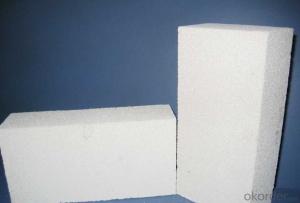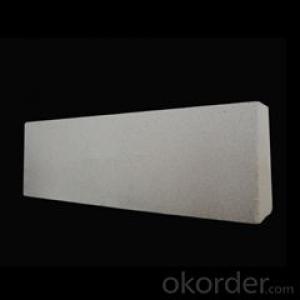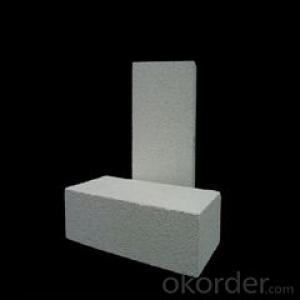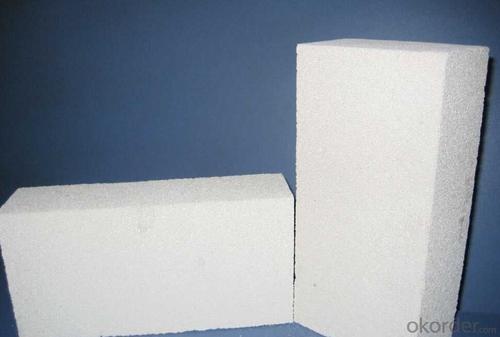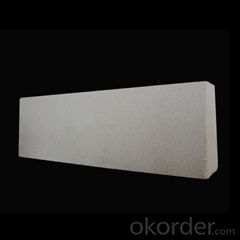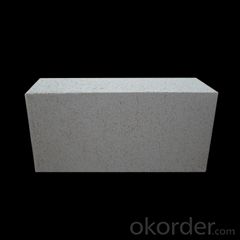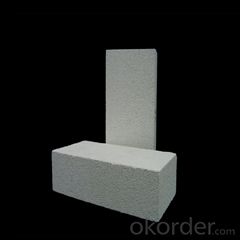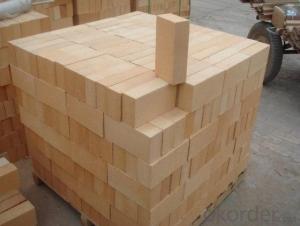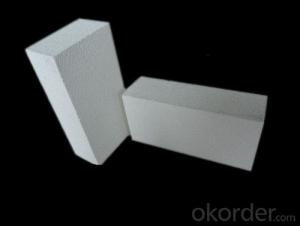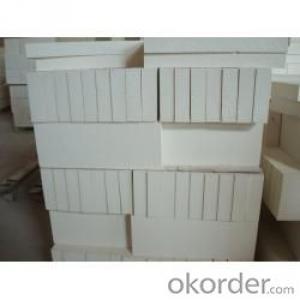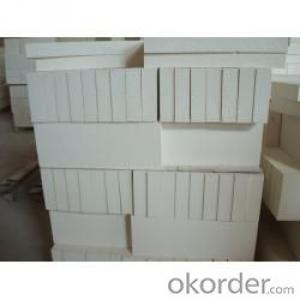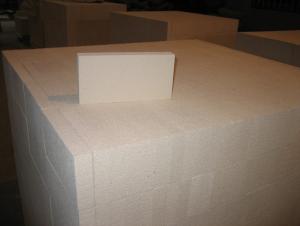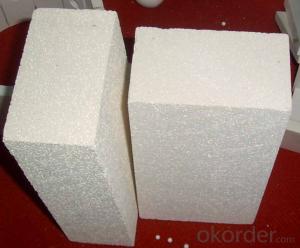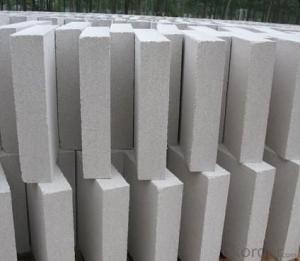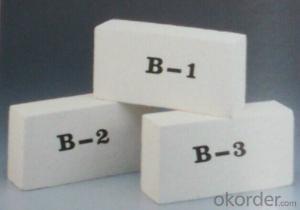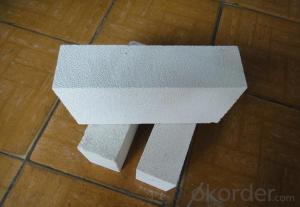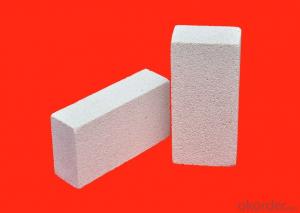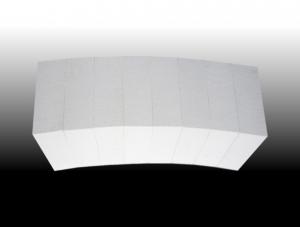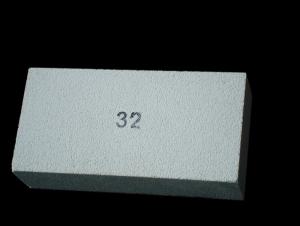Insulating Fire Brick - Refractory Mullite Insulating Refractory Brick JM 88
- Loading Port:
- Shanghai
- Payment Terms:
- TT OR LC
- Min Order Qty:
- 5000 kg
- Supply Capability:
- 10000 kg/month
OKorder Service Pledge
OKorder Financial Service
You Might Also Like
Refractory mullite insulating refractory brick JM 23
Okorder series heat insulation brick
Okorder series thermal insulation brick is an effective, energy saving, low carbon, environmental protection advanced, according to the ASTM standard manufacturing products. Okorder series products are best Li Ning and insulation in all types of industrial furnaces in the metallurgical field, aluminum, petrochemical, electric power and glass ceramic materials. They can be used as part of the working layer of thermal insulation or non - melting. Products have been widely used in the following furnace, achieved satisfactory results.
Application of heat preservation brick
Metallurgical Industry: blast furnace, hot blast furnace, heating furnace, etc..
Petrochemical Industry: ethylene cracking furnace, hydrogen production furnace, primary reformer, heating furnace, etc..
Ceramic industry: roller kiln, kiln, etc..
Glass industry: glass furnace regenerator, etc.
Carbon industry: carbon furnace, etc..
Aluminum electrolysis industry: aluminum reduction cell, etc.
Other industries: tunnel kiln, shuttle kiln, etc..
Advantages of heat insulation brick
Low thermal conductivity: more porosity will bring good thermal insulation effect, energy saving.
High crushing strength: high crushing strength, volume stability.
Low heat storage: small heat storage to absorb more heat, energy-saving effect is obvious.
Gao Chundu: iron, alkali metal impurity content is low.
The precise size: Brick size processing precision, special shape cutting and grinding, accelerate the brickwork.
Insulating brick picture
Common problem solutions
1. What products do you have?
We have all kinds of refractory bricks, refractory casting materials, mortar, cement, ceramic fiber products, etc..
Or you can browse our products to choose what you need.
2. How to control product quality?
With strict quality control system throughout the material selection and production process, we have the quality of refractory materials and ceramic fiber products to meet customer requirements.
From the selection of raw materials, the quality of our control to start. The quality certificate of the raw material is required, each batch of the products are to be tested in the use of the forward line. In the production process, the quality control by the workers, and then each piece of classification, and through the quality supervision and inspection.
3. Can you give me a brief introduction to the application of your product?
My company is mainly engaged in refractories in the steel, cement, glass, ceramics, petrochemical, electric power and other industries.
4. What information do you need if I need you?
In order to select the right products, we will provide us with information, such as the United States, technical data, order quantity, product application, etc..
If you have any questions, please contact us.

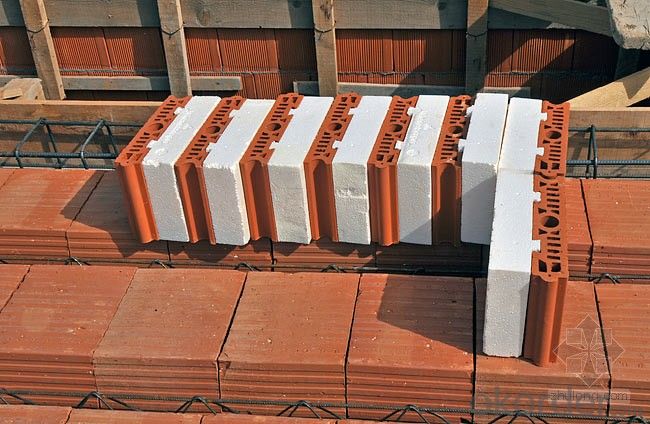
- Q: Can insulating fire bricks be used in the construction of boilers for power plants?
- Yes, insulating fire bricks can be used in the construction of boilers for power plants. These bricks have excellent insulating properties, which help to retain heat and increase energy efficiency in the boilers. Additionally, their lightweight nature reduces the overall weight of the construction, making them a suitable choice for power plant boilers.
- Q: What is a JQK composite lightweight thermal insulation brick?
- It is a cement based composite waterproof mortar which is pressed and molded. The material has good heat preservation effect and high thermal conductivity.
- Q: Can insulating fire bricks be used in the construction of pizza ovens?
- Yes, insulating fire bricks can be used in the construction of pizza ovens. These bricks are designed to withstand high temperatures and provide excellent insulation, making them ideal for use in pizza ovens. They can help retain heat efficiently, resulting in a more even and consistent cooking temperature. Insulating fire bricks also have low thermal conductivity, which means they prevent heat loss and ensure the pizza oven remains hot for longer periods, enhancing energy efficiency. Overall, using insulating fire bricks in the construction of pizza ovens can contribute to better heat retention, improved cooking performance, and more energy-efficient operation.
- Q: Can insulating fire bricks be used as insulation in walls and roofs?
- Insulation in walls and roofs can be achieved by utilizing insulating fire bricks. These bricks are constructed from lightweight materials that possess exceptional thermal insulation properties. Their thermal conductivity is low, allowing them to effectively minimize heat transfer through walls and roofs. Consequently, they are a fitting selection for enhancing energy efficiency and insulating buildings. Furthermore, insulating fire bricks are both long-lasting and fire-resistant, rendering them a secure choice for insulation. Nevertheless, it is crucial to acknowledge that these bricks are typically employed in high-temperature environments such as furnaces and kilns. Thus, they might not be the most economical or practical option for all wall and roof insulation requirements. In terms of cost, installation ease, and overall performance, other insulation materials specifically designed for building applications may be more appropriate.
- Q: Can insulating fire bricks be used in the construction of coke ovens?
- The use of insulating fire bricks in the construction of coke ovens is indeed possible. These bricks are specifically designed to endure extreme temperatures and offer exceptional thermal insulation. Coke ovens, which typically operate at around 2000 degrees Fahrenheit, necessitate materials that can withstand such conditions. The low thermal conductivity of insulating fire bricks effectively hinders heat transfer between the interior and exterior of the oven. This feature helps to maintain the necessary high temperatures for coal carbonization in the coke oven, while simultaneously minimizing heat loss. Moreover, insulating fire bricks possess a lightweight composition and high strength, which makes them ideal for coke oven construction. Their lightweight nature facilitates easier installation and reduces the overall weight of the structure. Additionally, their high strength ensures that they can endure the harsh operating conditions of the coke oven without cracking or crumbling. In conclusion, insulating fire bricks are a suitable choice for constructing coke ovens due to their ability to withstand high temperatures, provide thermal insulation, and offer durability.
- Q: Can insulating fire bricks be used in the construction of smelting crucibles?
- Certainly, one can utilize insulating fire bricks in the construction of smelting crucibles. These bricks have been specifically designed to endure high temperatures and offer exceptional insulation. They find wide usage in various applications that demand heat retention and protection, such as kilns and furnaces. Smelting crucibles, which are employed for the purpose of melting and refining metals, also necessitate materials capable of withstanding extreme temperatures. Insulating fire bricks prove to be an ideal selection for constructing smelting crucibles due to their ability to sustain a consistent temperature within the crucible and prevent heat loss. Furthermore, their insulating properties contribute to reduced energy consumption and heightened efficiency in the smelting process.
- Q: Are insulating fire bricks lightweight or heavy?
- Insulating fire bricks possess a lightweight quality, a result of their deliberate design to exhibit high insulation and low density. Their composition primarily consists of lightweight materials like expanded clay, perlite, and vermiculite, which further enhance their weightlessness. Consequently, these bricks prove to be more manageable and easier to install when compared to conventional heavy fire bricks. Nonetheless, insulating fire bricks manage to maintain exceptional thermal insulation capabilities, rendering them well-suited for a range of applications, such as kilns, furnaces, and fireplaces.
- Q: Several kinds of energy-saving bricks
- It can be said that the type of brick is the kind of energy-saving brick. Coal gangue sintered brick (known as red brick), porous brick, hollow brick, aerated concrete block brick, etc..
- Q: Are insulating fire bricks resistant to mold or mildew?
- No, insulating fire bricks are not resistant to mold or mildew. These types of bricks are specifically designed to withstand high temperatures and provide excellent insulation, but they do not possess any inherent resistance to mold or mildew growth. Mold and mildew can still develop on the surface of insulating fire bricks if they are exposed to moisture or damp conditions. To prevent mold or mildew growth, it is important to ensure that the bricks are kept dry and well-ventilated. Regular cleaning and maintenance can also help in preventing the growth of mold or mildew on the surface of insulating fire bricks.
- Q: Can insulating fire bricks be used for insulation in aluminum smelters?
- Yes, insulating fire bricks can be used for insulation in aluminum smelters. Insulating fire bricks are made from special lightweight materials that have high insulating properties, making them ideal for applications that require high-temperature insulation. Aluminum smelters operate at extremely high temperatures, and insulating fire bricks can effectively withstand and retain the heat, preventing heat loss and improving energy efficiency. Additionally, these bricks are resistant to thermal shock, a common occurrence in smelting processes, which makes them highly suitable for use in aluminum smelters. Insulating fire bricks can also provide a protective barrier, reducing the risk of heat damage to the surrounding structures and equipment. Therefore, using insulating fire bricks for insulation in aluminum smelters can enhance thermal efficiency, reduce energy consumption, and ensure a safe and efficient smelting process.
Send your message to us
Insulating Fire Brick - Refractory Mullite Insulating Refractory Brick JM 88
- Loading Port:
- Shanghai
- Payment Terms:
- TT OR LC
- Min Order Qty:
- 5000 kg
- Supply Capability:
- 10000 kg/month
OKorder Service Pledge
OKorder Financial Service
Similar products
Hot products
Hot Searches
Related keywords
